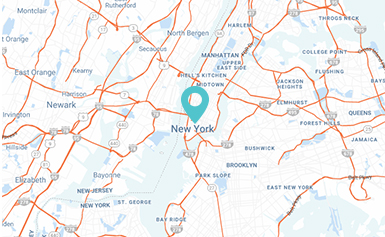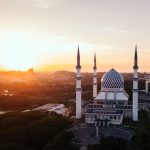Malacca’s Cultural Heritage: A Tapestry of History and Diversity
Nestled on the southwestern coast of Peninsular Malaysia lies a city where the echoes of time reverberate through its streets, a city where history, culture, and diversity intersect to create an enchanting tapestry. Malacca, recognized as a UNESCO World Heritage Site, is more than just a destination; it’s a living testament to the confluence of civilizations that have woven together the rich fabric of its cultural heritage.
Malacca’s cultural heritage journey through time has been nothing short of remarkable. Its roots trace back to the early 15th century when it was founded as a vital trading port. This strategic location attracted a mesmerizing array of travelers – Chinese, Indian, Arab, and European – who brought with them a treasure trove of traditions, religions, languages, and stories. Let’s discover with Green Sun Travel the place that once was where the world met, traded, and left its mark.
Historical Significance of Malacca’s cultural heritage
The historical significance of Malacca in shaping its rich cultural heritage cannot be overstated. Founded in the early 15th century by Parameswara, a Sumatran prince, Malacca’s strategic location at the crossroads of maritime routes made it an indispensable trading port. As a result, the city quickly evolved into a global nexus, attracting a plethora of merchants and explorers from far-flung corners of the world.
Malacca’s prominence as a crucial trading port fostered a melting pot of cultures, religions, and languages, all converging at this maritime crossroads. The city became a vivid reflection of the vast tapestry of human interactions and the global exchange of ideas and commodities.
Chinese traders, drawn by the allure of Malacca’s wealth and strategic location, established a thriving presence, bringing with them their goods, customs, and cultural practices. The influence of Chinese culture remains evident in Malacca’s traditions, festivals, and architecture.
Indian traders, similarly enamored by Malacca’s allure, brought their unique traditions, religions, and cuisine. The city’s Indian cultural influences, such as Hindu and Buddhist temples, and the aromatic spices that arrived in its bustling markets, added to the city’s rich cultural mosaic.

Arab and Muslim traders introduced Islam to Malacca, which became a pivotal part of the city’s cultural fabric. Mosques, Arabic architecture, and the adoption of Islamic customs are visible testaments to the enduring influence of Arab culture in Malacca.
The European presence, particularly the Portuguese and Dutch, left an indelible mark on the city. Malacca’s colonization by the Portuguese and, later, the Dutch, brought with it European architecture, fortresses, and a blend of cultures that would become integral to the city’s identity.
However, one of the most transformative aspects of Malacca’s history was its role in the spice trade. The city was not only a key trading point for spices but also a gateway for the movement of goods and ideas between the East and West. The exotic spices, precious metals, and various commodities that passed through its bustling markets catalyzed cultural exchange and impacted the culinary traditions of Malacca, making it a gastronomic delight for travelers.
In essence, Malacca’s historical significance is deeply woven into its cultural tapestry. Its role as a melting pot of civilizations, religions, and languages, along with its crucial position in the global spice trade, has left an enduring legacy that continues to shape the city’s identity and enchant visitors who seek to explore its historical roots and rich cultural heritage. Malacca stands as a living testament to the remarkable interplay of history and culture.
Architectural Marvels
One of the most captivating facets of Malacca’s cultural heritage lies in its architectural diversity. This city wears its history on its sleeve through a treasure trove of well-preserved historical buildings and structures.
St. Paul’s Hill, dominated by the ruins of a Portuguese fortress, beckons history enthusiasts and adventurers alike. Though the fortress may be incomplete, the panoramic views from its heights offer a breathtaking glimpse into the city’s past and present.
The Dutch Square, with its distinctive red-painted buildings, is a testament to the Dutch colonial era. The Stadthuys, Christ Church, and the Clock Tower stand as living remnants of a time gone by, their vibrancy contrasting beautifully with the cityscape.
The Baba-Nyonya Heritage Museum, another gem, meticulously preserves the Peranakan culture – a fusion of Chinese and Malay influences. With its exquisitely decorated interiors and antique furnishings, it transports visitors into the heart of this unique and vibrant heritage.
Cheng Hoon Teng Temple, often referred to as the oldest Chinese temple in Malaysia, is a masterpiece of architecture and craftsmanship. Its intricate details and spiritual aura are testaments to the city’s rich and diverse cultural influences.
Cultural Influences
The cultural heritage of Malacca is a kaleidoscope of influences that reflect the city’s history as a melting pot of civilizations.
Malay culture is deeply rooted in the region, visible in the local cuisine, traditional music, and captivating dance performances. Visitors have the chance to immerse themselves in the vibrant traditions of the Malay people.
Malacca’s sizeable Chinese community has etched its cultural mark, seen in its architecture, language, and the annual revelry of Chinese New Year celebrations that paint the city red and gold.
The Indian influence, from the temples to the delicious local cuisine, offers a delightful taste of the subcontinent. The aromas and colors bring a piece of India to Malacca’s streets.
The Portuguese and Dutch colonial influences remain etched in the city’s architecture and historical sites, providing glimpses into its colonial past that continue to tell their tales.
The Peranakan culture, with its fascinating blend of Chinese and Malay traditions, is an enduring and unique facet of Malacca’s cultural heritage, celebrated with pride.
Preservation Efforts

Malacca’s cultural heritage is not merely a static relic of the past; it is a dynamic and living testament to the city’s enduring commitment to preserving its history and traditions. As a UNESCO World Heritage Site, Malacca acknowledges the immense responsibility of safeguarding its invaluable cultural heritage, and it takes this role very seriously.
Local authorities, in conjunction with heritage preservation organizations, have launched concerted and tireless efforts to ensure that the legacy of Malacca’s rich heritage remains intact for the enjoyment and education of future generations.
1. Conservation of Historical Buildings
One of the most visible aspects of these preservation efforts is the meticulous conservation and restoration of historical buildings. The city’s skyline is adorned with architectural wonders from various periods in its history, including Dutch, Portuguese, and Chinese influences. These buildings, though weathered by time, have been given a new lease on life. Skilled craftsmen and conservation experts work tirelessly to repair, restore, and protect these structures, ensuring that they continue to tell the stories of Malacca’s diverse past.
2. Cultural and Historical Education
Malacca recognizes the importance of educating both residents and visitors about the significance of its cultural heritage. Museums, heritage sites, and cultural centers are equipped not only to preserve historical artifacts but also to narrate the stories behind them. Guided tours and educational programs provide valuable insights into the city’s history, fostering a deeper appreciation for its cultural significance.
3. Reviving Traditional Crafts
Preserving cultural heritage goes beyond preserving physical structures; it also involves reviving traditional crafts and art forms. In Malacca, you can find artisans who continue to practice age-old techniques in crafting pottery, textiles, and traditional handicrafts. These crafts not only serve as a source of livelihood for the local community but also help to ensure the survival of these traditional skills.
4. Cultural Festivals and Events
Malacca organizes a plethora of cultural festivals and events throughout the year. These celebrations, such as the Malacca Arts and Performance Festival and the Malacca River Festival, offer a platform for showcasing the city’s rich heritage through various art forms, performances, and culinary traditions. These events not only entertain but also educate visitors about Malacca’s cultural diversity and history.
5. Preservation of Intangible Heritage
Malacca’s heritage isn’t confined to tangible structures and artifacts. Intangible heritage, including traditional music, dance, rituals, and oral traditions, is also a vital part of the city’s cultural legacy. Efforts are made to document, preserve, and promote these intangible aspects to ensure that they are not lost to time.
6. Sustainable Tourism
Recognizing the delicate balance between tourism and heritage preservation, Malacca has implemented sustainable tourism practices. Measures are in place to limit the environmental impact of tourism and to ensure that the city’s heritage sites are not overrun, allowing for a more respectful and enriching visitor experience.
Conclusion
Malacca’s cultural heritage is more than just a glimpse into history; it’s a journey through time, an exploration of diverse cultures, and a celebration of the enduring spirit of a city that has seen the world pass through its gates. As Malacca continues to evolve, its cultural heritage remains a beacon of history, diversity, and the beautiful tapestry of human experiences. It’s a place where the past and present intertwine, creating an enchanting story that beckons travelers from across the globe to walk in its footsteps, explore its architecture, and savor the flavors of its multicultural heritage. Malacca is, without a doubt, a living treasure chest of history and diversity.







